Study on Characteristics of Overburden Strata Structure above Abandoned Gob of Shallow Seams—A Case Study
Abstract
1. Introduction
2. Engineering Background
2.1. Overview of the Proposed Construction
2.2. Geological Conditions of Proposed Site
3. Study of the Structural Characteristics of Overburden in an Abandoned Mine of the Shallow Coal Seam Group
3.1. Study on Instability Mechanism of Overburden Structure in Abandoned Mine of Coal Seam Group
3.1.1. Analysis of the Load on the Rock Stratum
3.1.2. Rock Strata Breaking Step Distance
3.1.3. Calculation of Free Space under the Rock Strata
3.1.4. Development Mechanism Analysis of Overburden Rock Failure and the Instability of the Coal Seam Group
3.1.5. Study of the Characteristics of Overburden Rock in an Abandoned Mine
3.1.6. Analysis of Residual Deformation of Overburden Rock in an Abandoned Mine
3.2. Similar Simulation Experiment on the Evolution Law of the Overlying Strata Structure in an Abandoned Mine of the Coal Seam Group
3.2.1. Overburden Rock Failure Characteristics of Each Coal Seam after Coal Mining
3.2.2. Study on the Distribution Law of Residual Cracks in an Abandoned Mine
3.3. Numerical Simulation Experiment on the Evolution Law of Overburden Structure in an Abandoned Mine of the Coal Seam Group
3.3.1. Numerical Simulation Establishment
3.3.2. Numerical Simulation Results
4. Treatment of the Shallow Coal Seam Group in the Abandoned Mine
4.1. Results of Study Area Exploration
4.2. Study on Overburden Rock Characteristics in the Study Area
4.3. Grouting Treatment Foundation in a Shallow-Buried Close-Distance Coal Seam Group in an Abandoned Mine
5. Conclusions
Author Contributions
Funding
Data Availability Statement
Conflicts of Interest
References
- Li, X.L.; Cao, Z.Y.; Xu, Y.L. Characteristics and trends of coal mine safety development. Energy Sources Part A Recover. Util. Environ. Eff. 2020, 2020, 1–19. [Google Scholar] [CrossRef]
- Hower, J.C.; Groppo, J.G.; Hsu-Kim, H.; Taggart, R.K. Distribution of rare earth elements in fly ash derived from the combustion of Illinois Basin coals. Fuel 2021, 289, 104676. [Google Scholar] [CrossRef]
- Islam, N.; Rabha, S.; Subramanyam, K.S.V.; Saikia, B.K. Geochemistry and mineralogy of coal mine overburden (waste): A study towards their environmental implications. Chemosphere 2021, 274, 129736. [Google Scholar] [CrossRef] [PubMed]
- Behera, S.K.; Mishra, D.P.; Ghosh, C.N.; Prashant; Mandal, P.K.; Singh, K.M.P.; Buragohain, J.; Singh, P.K. Characterization of lead-zinc mill tailings, fly ash and their mixtures for paste backfilling in underground metalliferous mines. Environ. Geol. 2019, 78, 394.1–394.13. [Google Scholar] [CrossRef]
- Baryakh, A.; Telegina, E.; Samodelkina, N.; Devyatkov, S.Y. Prediction of the intensive surface subsidences in mining potash series. J. Min. Sci. 2005, 41, 312–319. [Google Scholar] [CrossRef]
- Cui, X.M.; Wang, J.C.; Liu, Y.S. Prediction of progressive surface subsidence above longwall coal mining using a time function. Int. J. Rock Mech. Min. 2001, 38, 1057–1063. [Google Scholar] [CrossRef]
- Cui, X.M.; Zhao, Y.L.; Wang, G.R.; Zhang, B.; Li, C. Calculation of Residual Surface Subsidence Above Abandoned Longwall Coal Mining. Sustainability 2020, 12, 1528. [Google Scholar] [CrossRef]
- Leng, W.; Zhong, S.J. Surface subsidence caused by mantle plumes and volcanic loading in large igneous provinces. Earth Planet. Sci. Lett. 2010, 291, 207–214. [Google Scholar] [CrossRef]
- Wu, L.X.; Gao, J.H.; Ge, D.Q.; Liao, M.S. Experimental Study on Surface Subsidence Monitoring with D-InSAR in Mining Area. J. Cent. South Univ. 2005, 26, 778–782. [Google Scholar]
- Ma, J.B.; Jiang, N.; Wang, X.J.; Jia, X.; Yao, D. Numerical study of the strength and characteristics of sandstone samples with combined double hole and double fissure defects. Sustainability 2021, 13, 7090. [Google Scholar] [CrossRef]
- Chen, S.J.; Zhang, L.B.; Jiang, N.; Yin, D.; Gao, Z.; Guo, W. A case of large buildings construction above oldmine goaf in Shandong Province. J. China Coal. Soc. 2022, 47, 1017–1030. [Google Scholar] [CrossRef]
- Yao, D.H.; Jiang, N.; Wang, X.J.; Jia, X.; Lv, K. Mechanical behaviour and failure characteristics of rocks with composite defects of different angle fissures around hole. Bull. Eng. Geol. Environ. 2022, 81, 290. [Google Scholar] [CrossRef]
- Jiang, N.; Yin, D.W.; Ma, J.B.; Han, L.; Yin, Q. Effects of water immersion on the long-term bearing characteristics of crushed gangue in goaf. Geofluids 2021, 2021, 6675984. [Google Scholar] [CrossRef]
- Jung, H.C.; Kim, S.W.; Jung, H.S.; Min, K.D.; Won, J.S. Satellite observation of coal mining subsidence by persistent scatterer analysis. Eng. Geol. 2007, 92, 24–34. [Google Scholar] [CrossRef]
- Yang, H.; Deng, K.; Zhang, S.; Liu, C.; Rui-Peng, Y.U. Research on Subsidence Monitoring of Mine Surface Using Digital Close-range Photogrammetric Technique. J. Image Graph. 2008, 3, 519–524. [Google Scholar] [CrossRef]
- Davies, P.; Fryer, J. Photogrammetric monitoring of deformation caused by mine subsidence. Aust. Surv. 1995, 40, 5–9. [Google Scholar] [CrossRef]
- Guo, W.B.; Zhao, G.B.; Bai, E.H.; Guo, M.; Wang, Y. Effect of overburden bending deformation and alluvium mechanical parameters on surface subsidence due to longwall mining. Bull. Eng. Geol. Environ. 2021, 80, 2751–2764. [Google Scholar] [CrossRef]
- Hou, D.F.; Li, D.H.; Xu, G.S.; Zhang, Y.; Engineering, S.; Beijing, T. Impact of mining thickness on dynamic subsidence characteristics in condition of mining under thick unconsolidated layers. Coal Sci. Technol. 2016, 44, 191–196. [Google Scholar] [CrossRef]
- Guo, Q.B.; Meng, X.R.; Li, Y.M.; Lv, X.; Liu, C. A prediction model for the surface residual subsidence in an abandoned goaf for sustainable development of resource-exhausted cities. J. Clean. Prod. 2021, 279, 123803. [Google Scholar] [CrossRef]
- Zhang, H.; Wang, Y.J.; Li, Y.F. SVM model for estimating the parameters of the probability-integral method of predicting mining subsidence. Sci. China Technol. Sci. 2009, 19, 385–388. [Google Scholar] [CrossRef]
- Hua, G.; Liang, Y.; Shen, B.T.; Qu, Q.; Xue, J. Mining-induced strata stress changes, fractures and gas flow dynamics in multi-seam longwall mining. Int. J. Rock Mech. Min. 2012, 54, 129–139. [Google Scholar] [CrossRef]
- Xu, W.S.; Wang, F.; Gao, Z. Analysis on Overburden Load Structure in Mining Under Thick Loose Layer with Confined Water. Coal Technol. 2012, 31, 85–87. [Google Scholar]
- Cao, W.X.; Liu, H.L.; Hang, Y.J. Similarity Simulation on the Movement Characteristics of Surrounding Rock and Floor Stress Distribution for Large-Dip Coal Seam. Sensors 2022, 22, 2761. [Google Scholar] [CrossRef] [PubMed]
- Ghabraie, B.; Gang, R.; Smith, J.V. Characterising the multi-seam subsidence due to varying mining configuration, insights from physical modelling. Int. J. Rock Mech. Min. 2017, 93, 269–279. [Google Scholar] [CrossRef]
- Qin, Y.; Xu, N.X.; Zhang, Z.J.; Zhang, B. Failure Process of Rock Strata Due to Multi-seam Coal Mining: Insights from Physical Modelling. Rock Mech. Rock Eng. 2021, 54, 2219–2232. [Google Scholar] [CrossRef]
- Yin, D.; Ding, Y.; Jiang, N.; Li, F.; Zhang, J.; Xu, H. Mechanical properties and damage characteristics of coal samples under water immersion pressure. Lithosphere 2022, 2022, 1278783. [Google Scholar] [CrossRef]
- Cheng, G.W.; Yang, T.H.; Liu, H.Y.; Wei, L.; Zhao, Y.; Liu, Y.; Qian, J. Characteristics of stratum movement induced by downward longwall mining activities in middle-distance multi-seam-ScienceDirect. Int. J. Rock Mech. Min. 2020, 136, 104517. [Google Scholar] [CrossRef]
- Ghabraie, B.; Gang, R.; Barbato, J.; Smith, J.V. A predictive methodology for multi-seam mining induced subsidence. Int. J. Rock Mech. Min. 2017, 93, 280–294. [Google Scholar] [CrossRef]
- Pan, H.Y.; Jiang, N.; Gao, Z.Y.; Liang, X.; Yin, D. Simulation study on the mechanical properties and failure characteristics of rocks with double holes and fractures. Geomech. Eng. 2022, 30, 93–105. [Google Scholar]
- Herrera, G.; Tomas, R.; Lopez-Sanchez, J.M.; Delgado, J.; Mallorqui, J.J.; Duque, S.; Mulas, J. Advanced DInSAR analysis on mining areas: La Union case study (Murcia, SE Spain). Eng. Geol. 2007, 90, 148–159. [Google Scholar] [CrossRef]
- O’Connor, K.M.; Murphy, E.W. TDR monitoring as a component of subsidence risk assessment over abandoned mines. Int. J. Rock Mech. Min. Sci. 1997, 34, 619. [Google Scholar] [CrossRef]
- Huang, Q.X.; Wang, L.T.; Du, J.W. Stability of coal pillars in room-and-pillar goaf with opposite mining under ultra-close shallow goafs. J. Min. Saf. Eng. 2022, 39, 118–125. [Google Scholar] [CrossRef]
- Zhao, L.C.; Li, L.; Peng, Y.H. Mechanics of Materials; University of Electronic Science and Technology Press: Chengdu, China, 2020. [Google Scholar]
- Song, Y.; Yang, M.; Ma, H. Study on deformation law and breaking span of main roof of isolated working face based on thin plate theory. Saf. Coal Mines 2022, 53, 201–207. [Google Scholar] [CrossRef]
- Wang, G.A.; Zhu, S.T.; Jiang, F.X.; Zhang, X.; Liu, J.; Wang, X.; Ning, T.; Zhang, Y.; Wei, Q. Seismic mechanism of coal pillar-key layer structure in fully mechanized caving face of inclined thick coal seam. J. China Coal Soc. 2022, 47, 2289–2299. [Google Scholar] [CrossRef]
- Zuo, J.P.; Sun, Y.J.; Wen, J.H.; Zhengdai, L.I.; Beijing, T.; Engineering, C. Theoretical and mechanical models of rock strata movement and their prospects. Coal Sci. Technol. 2018, 46, 87. [Google Scholar] [CrossRef]
- Li, G.C. Study on Stability and Safety Control of Surrounding Rock of Weak Interlayer Roof Roadway. Ph.D. Thesis, China University of Mining and Technology, Beijing, China, 2008. [Google Scholar]
- Huang, Y. Study on Deformation and Failure Characteristics and Height Development of Overlying Strata under Repeated Mining of Double Coal Seams. Ph.D. Thesis, China University of Mining and Technology, Beijing, China, 2014. [Google Scholar]
- Chen, Y.J.; Pan, C.L.; Cao, P.; Wang, W. A new mechanical model for soft rock rheology. Rock Soil Mech. 2003, 24, 209–214. [Google Scholar] [CrossRef]
- Hou, D.F.; Li, D.H.; Xu, G.S.; Zhang, Y. Superposition model for analyzing the dynamic ground subsidence in mining area of thick loose layer. Int. J. Min. Sci. Technol. 2018, 28, 119–124. [Google Scholar] [CrossRef]
- Cui, X.; Che, Y.; Malinowska, A.; Zhao, Y.; Li, P.; Hu, Q.; Kang, X.; Bai, Z. Method and problems for subsidence prediction in entire process induced by underground mining. J. China Coal Soc. 2022, 47, 2170–2181. [Google Scholar] [CrossRef]
- Li, B.; Liang, Y.; Zhang, L.; Zou, Q. Experimental investigation on compaction characteristics and permeability evolution of broken coal. Int. J. Rock Mech. Min. 2019, 118, 63–76. [Google Scholar] [CrossRef]
- Wang, X.; Liu, Y. Study on Hydrogeological Conditions of Waterproofing and Sand Prevention in Shallow Buried Area of Coal Seam. Coal Technol. 2022, 41, 152–154. [Google Scholar] [CrossRef]

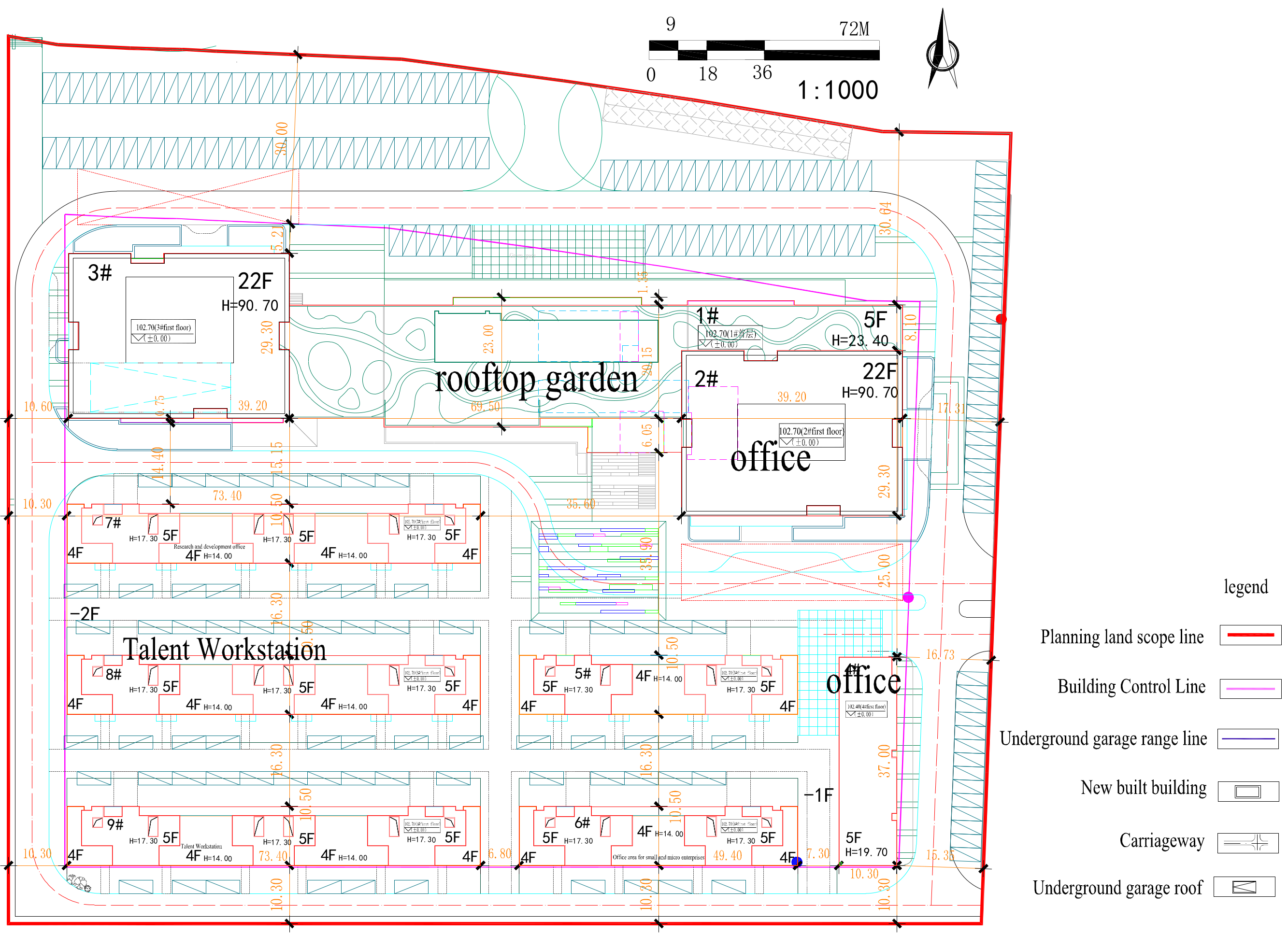

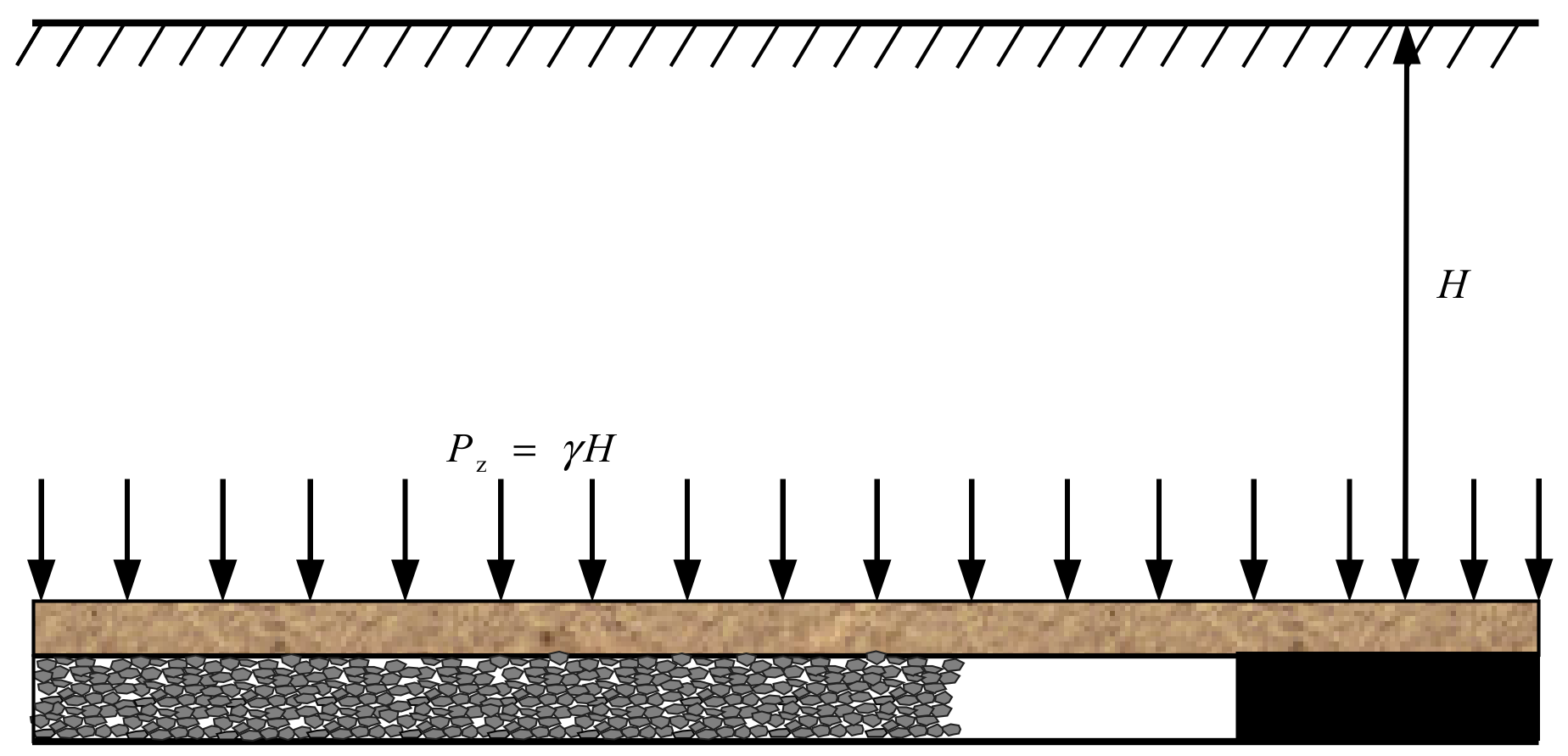
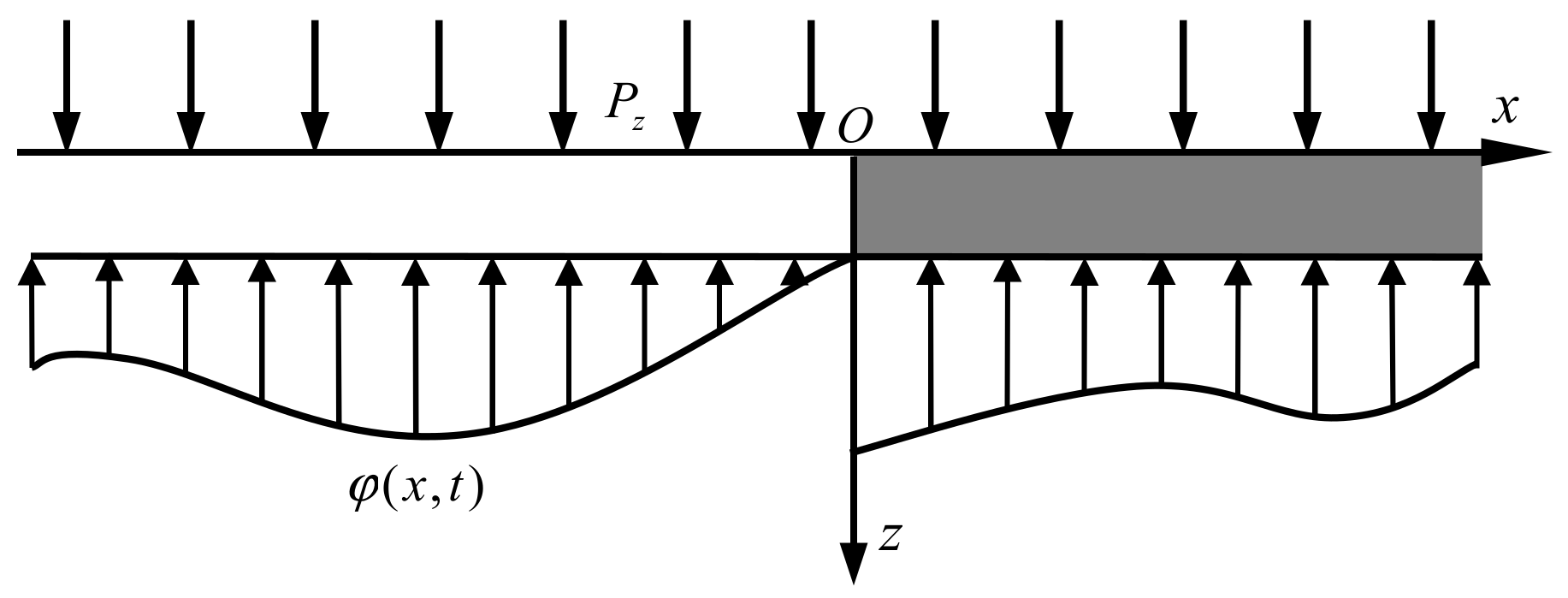






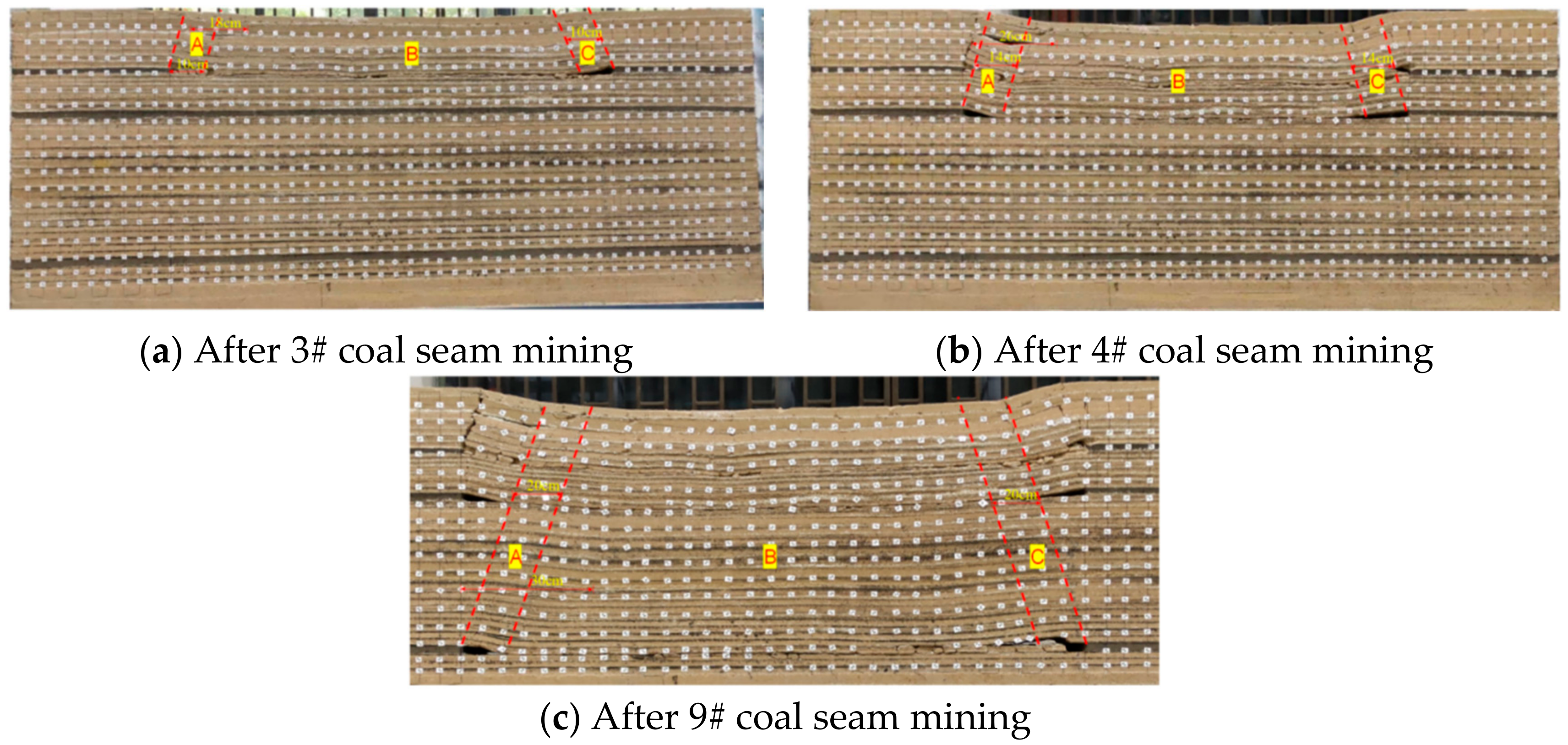
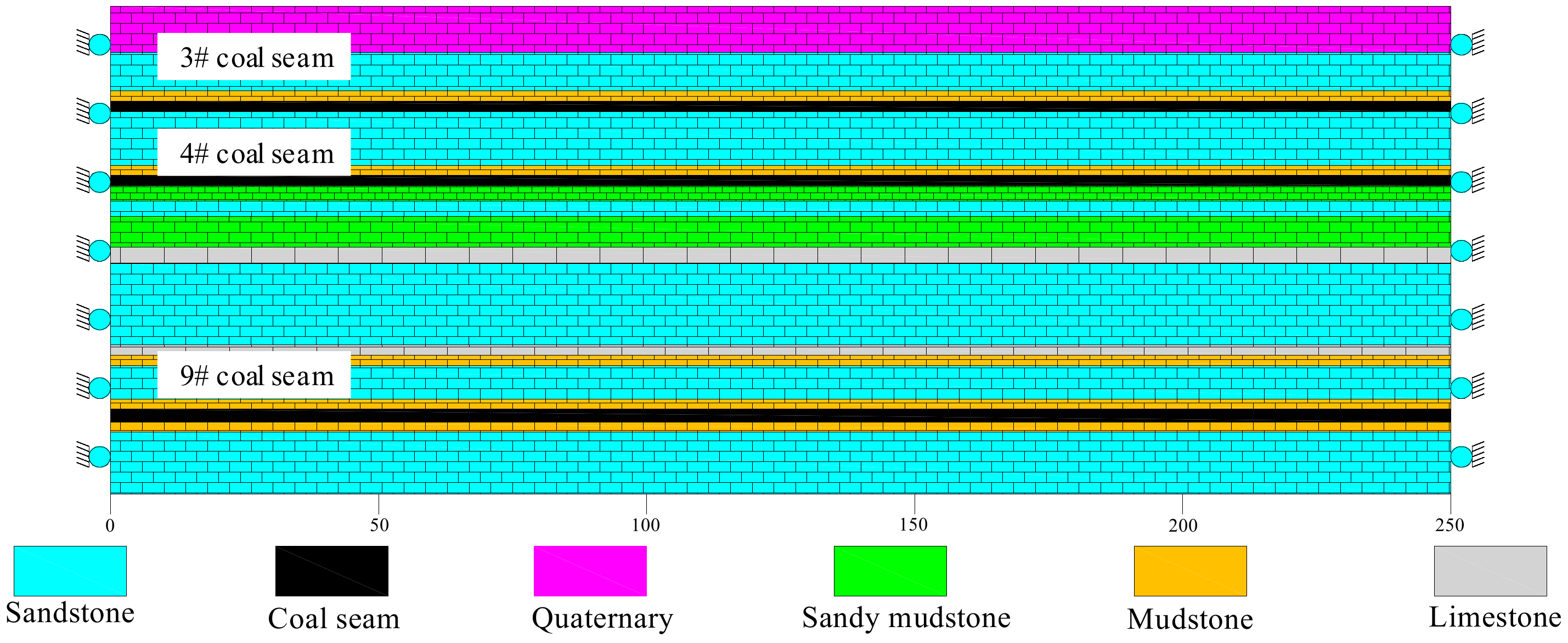





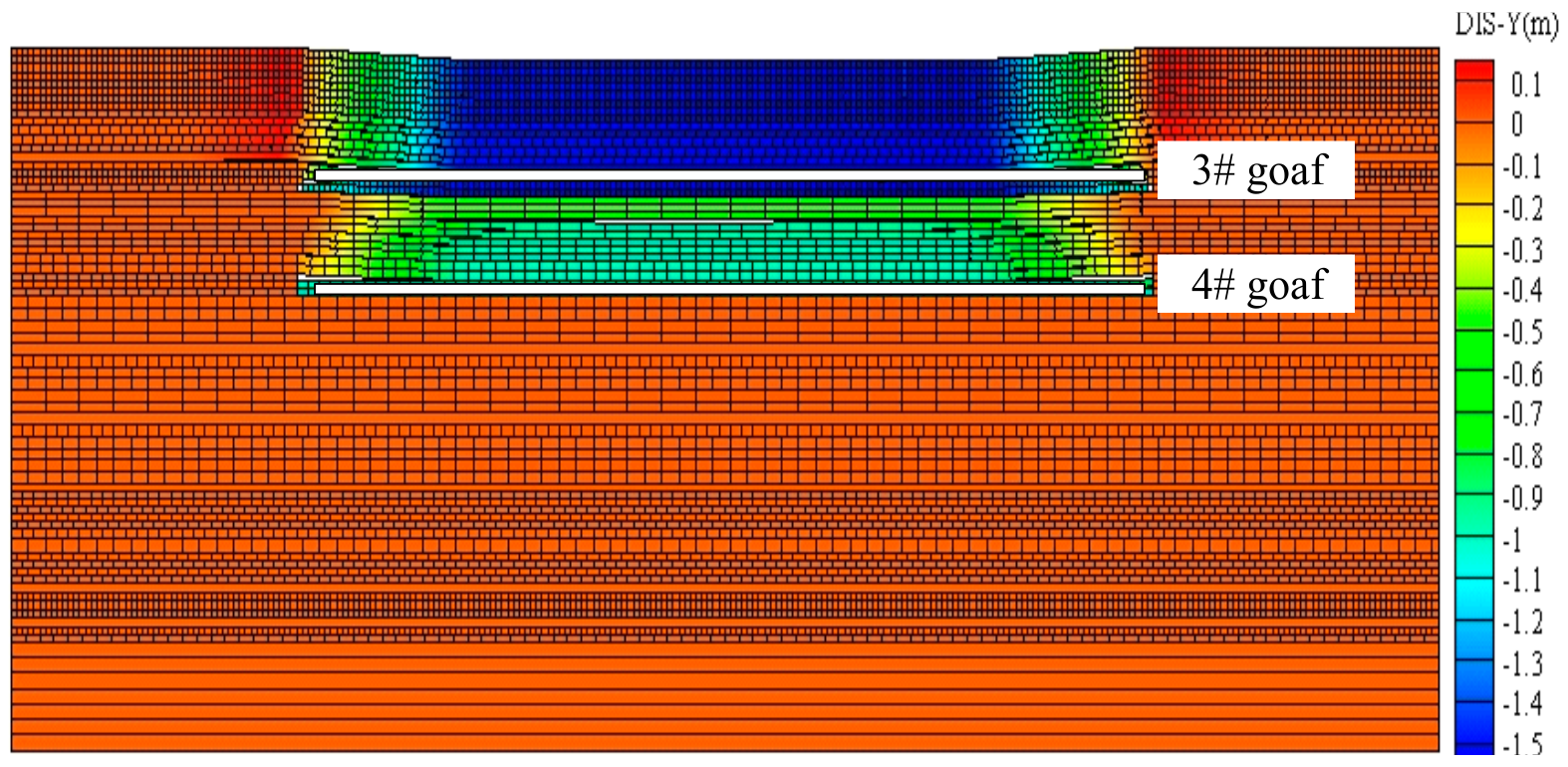

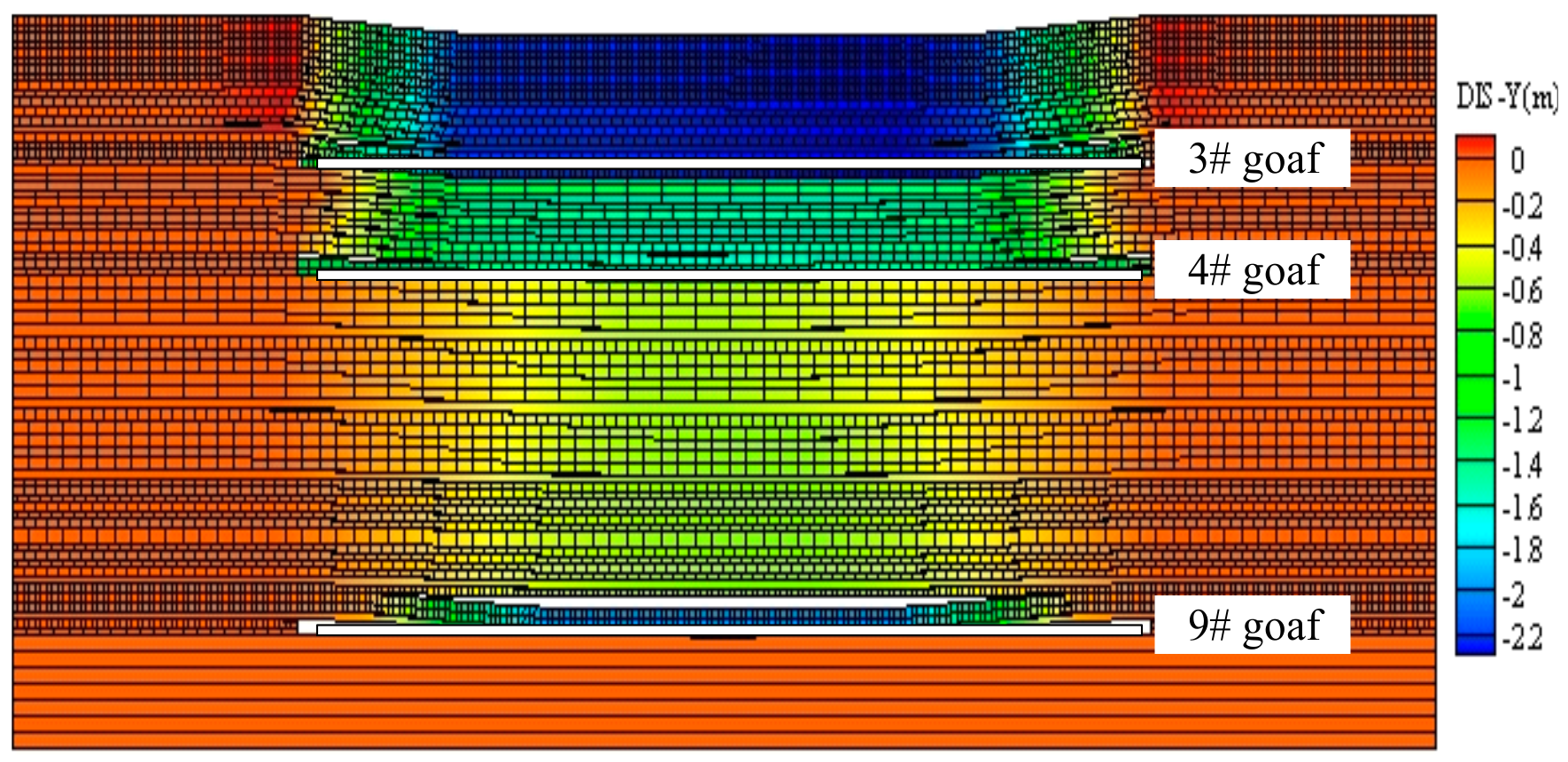
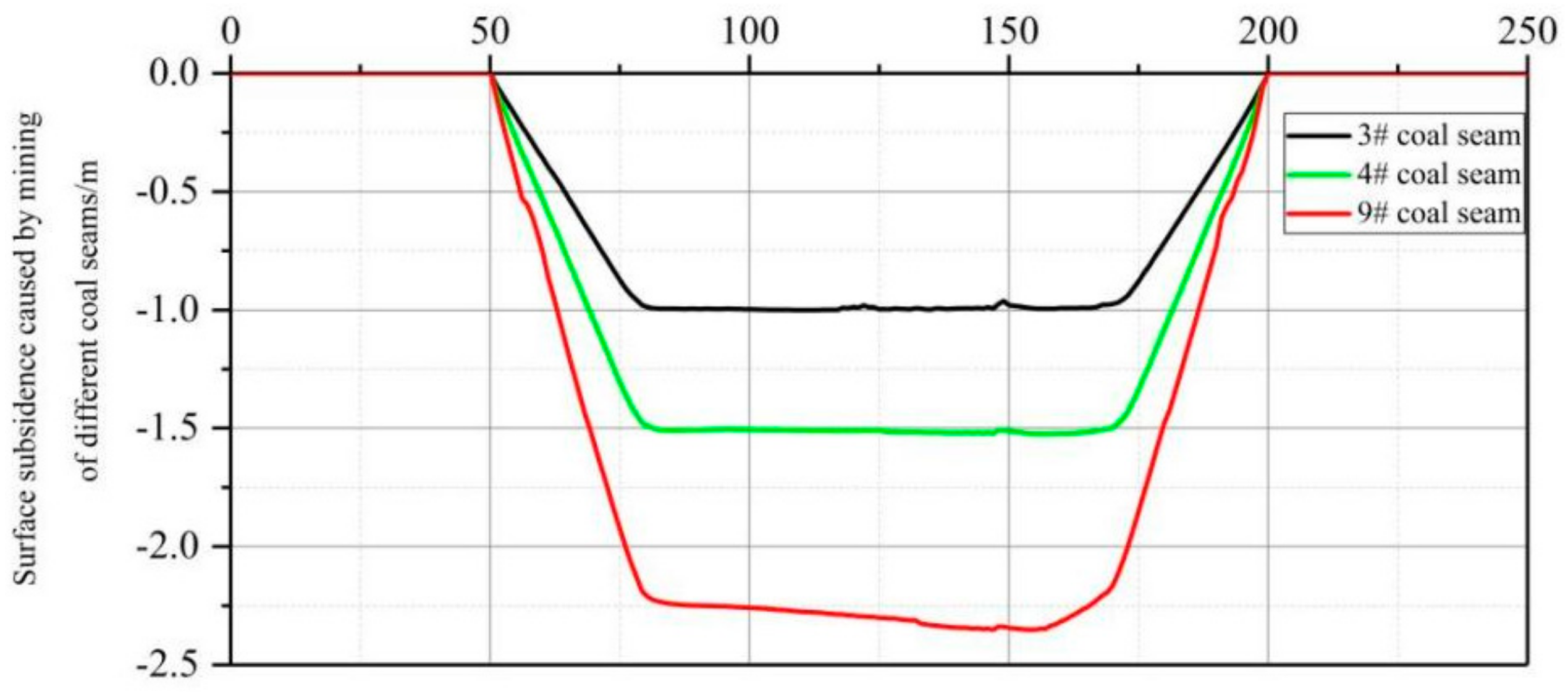


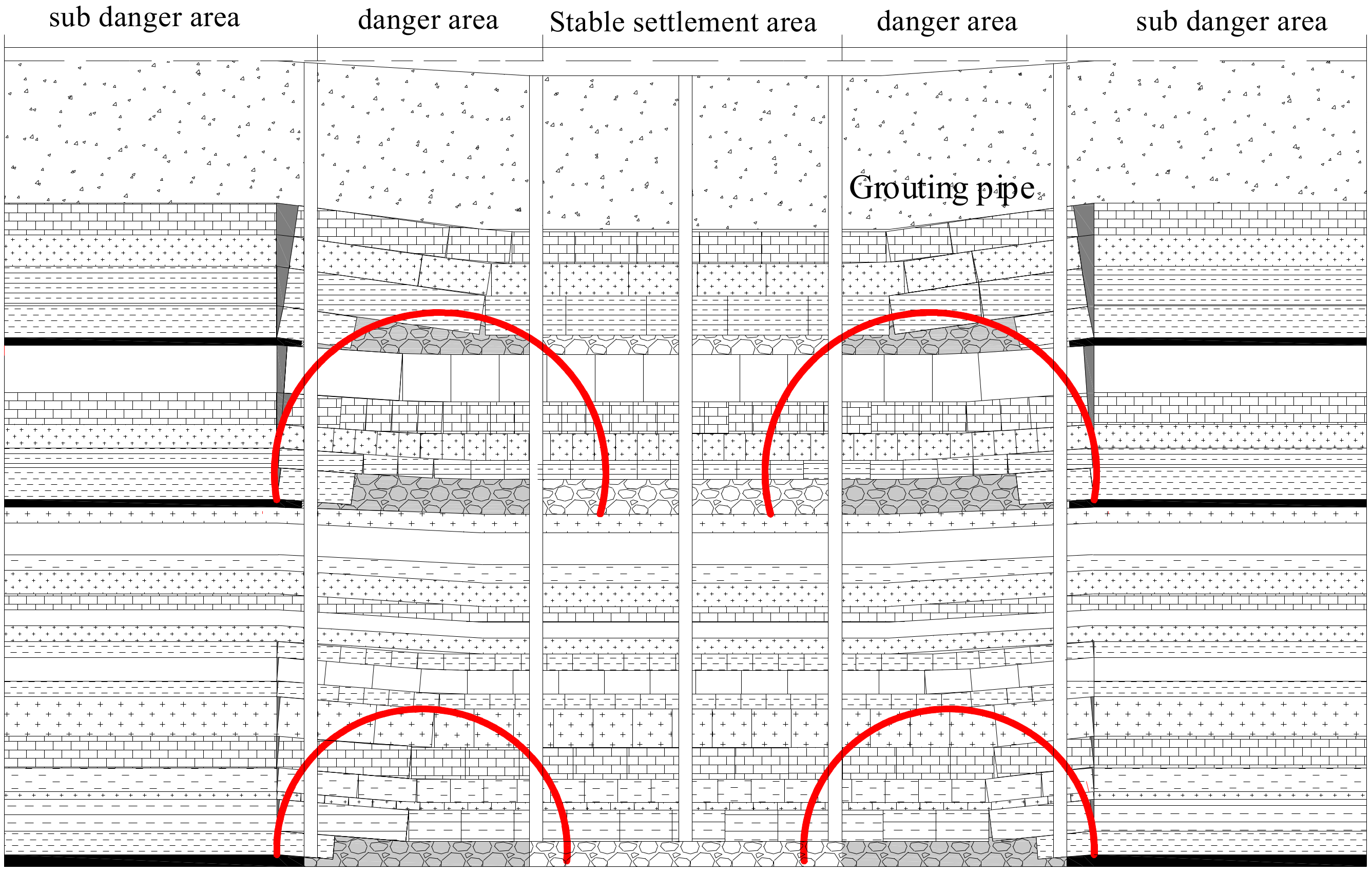
| Serial Number | Lithology | Elasticity Modulus, E × 104/MPa | / | MPa | Bulking Coefficient | |
|---|---|---|---|---|---|---|
| 1 | unconsolidated formation | 0.2 | 22.0 | 0.2 | 1.05 | |
| 2 | mudstone | 0.58 | 17.2 | 0.3 | 0.07 | 1.05 |
| 3 | fine sandstone | 2.06 | 25.09 | 0.201 | 3.48 | 1.03 |
| 4 | siltstone | 1.64 | 24.4 | 0.217 | 2.2 | 1.03 |
| 5 | Sandy mudstone | 1.55 | 24.1 | 0.268 | 1.3 | 1.025 |
| 6 | limestone | 9.63 | 25.4 | 0.22 | 6.13 | 1.05 |
| 7 | medium sandstone | 2.50 | 25.0 | 2.4 | 2.51 | 1.03 |
| 8 | coarse sandstone | 4.56 | 25.82 | 2.1 | 4.35 | 1.03 |
| Coal Seam | 3# Coal Seam and 4# Coal Seam | 9# Coal Seam |
|---|---|---|
| Residual subsidence volume/m | 0.11 | 0.22 |
| Serial Number | Hole Number | Drilling Depth/m | Goaf | Drilling Depth/m | Stuck Drill or Footage Significantly Accelerate the Depth/m | Caving Zone Height/m | Fracture Zone Height/m |
|---|---|---|---|---|---|---|---|
| 1 | zk3-25 | 120.20 | 3# coal seam | 34.8–37.6 (2.8) | 34.8–37.6 (2.8) | 19.5–34.8 (15.3) | |
| 2 | zk4-25 | 120.10 | 3# coal seam | 35.8–38.5 (2.7) | 35.8–38.5 (2.7) | 18.7–35.8 (17.1) | |
| 3 | zk4-28 | 120.30 | 3# coal seam | 38.3–40.7 (2.4) | 38.3–40.7 (2.4) | 19.7–38.3 (18.6) | |
| 4 | zk8-25 | 120.05 | 3# coal seam | 37.9–38.6 (0.7) | 36.6–38.4 (1.8) | 20.5–36.6 (16.1) |
| Serial Number | Hole Number | Drilling Depth/m | Goaf | Stuck Drill or Footage Significantly Accelerate the Depth/m | Caving Zone Height/m | Fracture Zone Height/m |
|---|---|---|---|---|---|---|
| 1 | zk3-25 | 120.20 | 4# coal seam | 52.3–55.5 (3.2) | 52.3–55.5 (3.2) | 33.6–52.3 (18.7) |
| 2 | zk4-25 | 120.10 | 4# coal seam | 56.7–59.3 (2.6) | 56.7–59.3 (2.6) | 36.2–56.7 (20.5) |
| 3 | zk4-28 | 120.30 | 4# coal seam | 61.4–65.5 (4.1) | 61.4–65.5 (4.1) | 42.5–61.4 (18.9) |
| 4 | zk8-25 | 120.05 | 4# coal seam | 59.7–62.1 (2.4) | 59.7–62.1 (2.4) | 40.4–59.7 (19.3) |
| Serial Number | Hole Number | Drilling Depth/m | Goaf | Drilling Depth/m | Stuck Drill or Footage Significantly Accelerate the Depth/m |
|---|---|---|---|---|---|
| 1 | zk3-25 | 120.20 | 9# coal seam | 97.5–100 (2.5) | |
| 2 | zk4-25 | 120.10 | 9# coal seam | 102.7–104.8 (2.1) | |
| 3 | zk4-28 | 120.30 | 9# coal seam | 108.9–110.9 (2.0) | |
| 4 | zk8-25 | 120.05 | 9# coal seam | 105.6–112.1 (6.5) | |
| 5 | zk8-28 | 120.45 | 9# coal seam | 108.7~114.6 (5.9) |
| 3# Coal Seam | 4# Coal Seam | 9# Coal Seam | Mean Error Rate | |
|---|---|---|---|---|
| field test | 18.6 m | 20 m | 28.2 m | |
| empirical formula | 31.86 m | 20 m | 34.49 m | 31.20% |
| theoretical analysis | 17.11 m | 19.5 m | 27.1 m | 5.6% |
| analogy simulation | 20.10 m | 20 m | 33.6 m | 9.8% |
| numerical simulation | 19.62 m | 20 m | 30.79 m | 5.8% |
Publisher’s Note: MDPI stays neutral with regard to jurisdictional claims in published maps and institutional affiliations. |
© 2022 by the authors. Licensee MDPI, Basel, Switzerland. This article is an open access article distributed under the terms and conditions of the Creative Commons Attribution (CC BY) license (https://creativecommons.org/licenses/by/4.0/).
Share and Cite
Jiang, N.; Lv, K.; Gao, Z.; Di, H.; Ma, J.; Pan, T. Study on Characteristics of Overburden Strata Structure above Abandoned Gob of Shallow Seams—A Case Study. Energies 2022, 15, 9359. https://doi.org/10.3390/en15249359
Jiang N, Lv K, Gao Z, Di H, Ma J, Pan T. Study on Characteristics of Overburden Strata Structure above Abandoned Gob of Shallow Seams—A Case Study. Energies. 2022; 15(24):9359. https://doi.org/10.3390/en15249359
Chicago/Turabian StyleJiang, Ning, Ke Lv, Zhiyou Gao, Huixin Di, Junbiao Ma, and Tianyi Pan. 2022. "Study on Characteristics of Overburden Strata Structure above Abandoned Gob of Shallow Seams—A Case Study" Energies 15, no. 24: 9359. https://doi.org/10.3390/en15249359
APA StyleJiang, N., Lv, K., Gao, Z., Di, H., Ma, J., & Pan, T. (2022). Study on Characteristics of Overburden Strata Structure above Abandoned Gob of Shallow Seams—A Case Study. Energies, 15(24), 9359. https://doi.org/10.3390/en15249359







